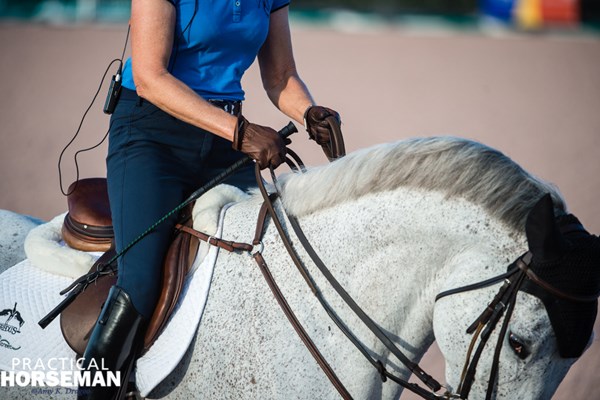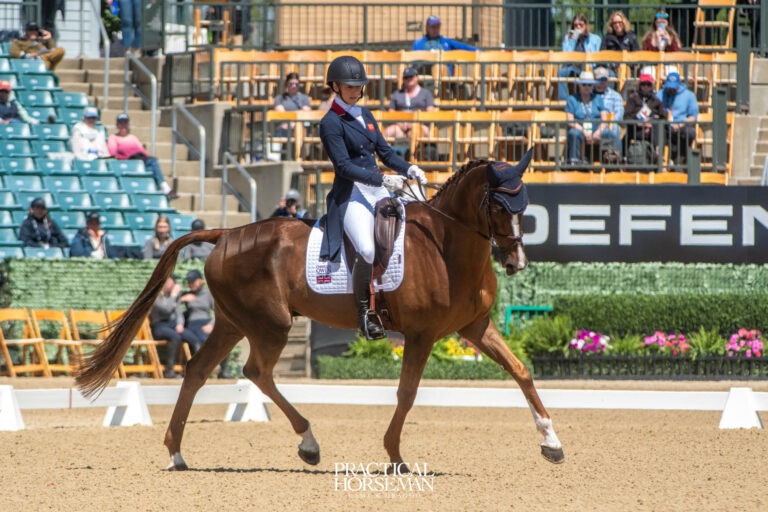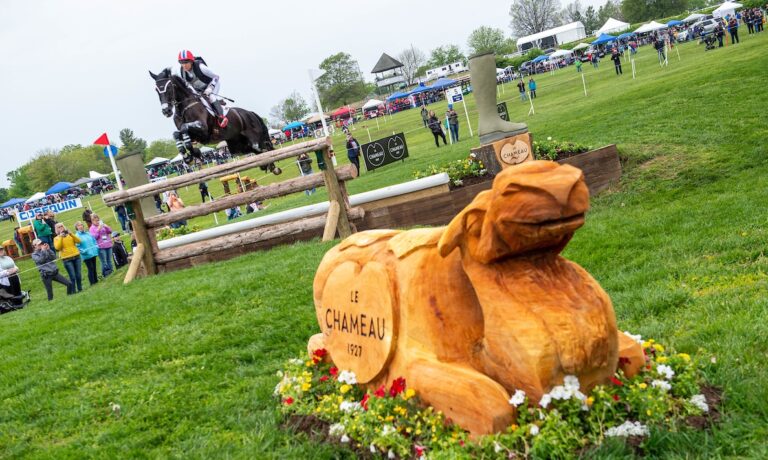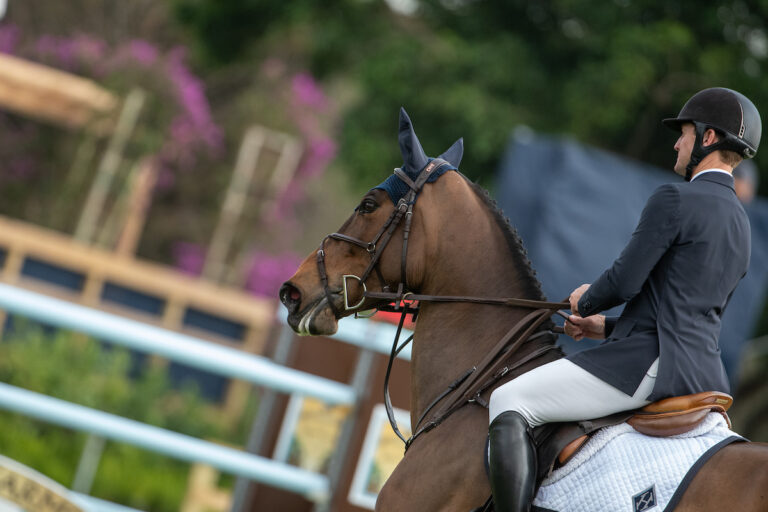Five-time Olympic athlete Anne Kursinski honed in on connection and feeling on Day 1 of the 2017 USEF George H. Morris Horsemastership Training Session presented by USHJA. Whether demonstrating while mounted or guiding the 12 clinic riders, she drove home that mindfulness is key.
“When I’m riding, I’m feeling the whole horse,” she said. “Every little bit of the horse.”
The riders were reminded that their legs, seat and back are not separate from their bodies and that they need to focus more on working with the horse rather than against the horse to instill confidence. “Self-awareness and having a correct position is about being supple and elastic but not frozen,” she said. “I had a trainer who used to say my hands are in my seat; my hands are in my back.”
 Twelve riders from across the country were chosen to partcipate in the annual clinic | Photo © Amy K. Dragoo
Twelve riders from across the country were chosen to partcipate in the annual clinic | Photo © Amy K. DragooThe day was devoted to working on the flat at the International Arena at the Adequan Global Dressage Festival showgrounds in Wellington, Florida. Anne promised the riders that attention to flatwork and dressage would help their jumping.
“Connection is so important to jumping,” she said. “If you are crooked, your horse will jump crooked. You can really solve all jumping problems on the flat.”
After a short demonstration where Anne wowed the crowd with her impressive rodeo skills while sticking the bucks and rears on her not-so-cooperative 8-year-old Caspar’s Lasino, the riders were divided into two groups and Anne dissected their position.
 Anne demonstrates the importance of short reins and later, tied a knot in all the riders’ reins which required them to have more give and take with the reins | Photo © Amy K. Dragoo
Anne demonstrates the importance of short reins and later, tied a knot in all the riders’ reins which required them to have more give and take with the reins | Photo © Amy K. DragooThey were reminded that their legs, seat and back are not separate from the whole body and that they needed to focus more on working with the horse rather than against the horse to instill confidence. “Self-awareness and position is about being supple and elastic but not frozen. A stiff rider makes a stiff horse,” she admonished.
They lengthened and shortened the trot moving from posting to sitting and back again. They did countless transitions. Then, they balanced in two-point position to test if their horses had accepted their seat and the rein with lightness. She also asked the riders to pilot their horses into small circles to test their responsiveness.
Riders were chosen from across the country and the 2017 participants include Caroline Dance from Pennsylvania, Cooper Dean from Alabama, Coco Fath from Connecticut, Madison Goetzmann from New York, Emma and Gracie Marlowe from California, Brian Moggre from Texas, Maya Nayyar from New York, T.J. O’Mara from New Jersey, Halie Robinson from California, Taylor St. Jacques from Virginia, and Michael Williamson from California.
Anne asked one of the riders, Cooper Dean, to drop his stirrups in order to make him sit deeper in the saddle when he had trouble getting his horse to move forward into the trot without breaking stride or backing up. “Sit the saddle,” was her mantra to the riders throughout the day.
She had him concentrate on the rhythm by keeping his body back and his hands together. When asking for a turn to the left, she told him to use more left leg at the girth and to focus more on giving and taking.
The students rode a shoulder-in to the left, where they were told to keep their hands even but to move their torsos and both hands slightly to the left. “Take a little and give a little,” she said. “Push with the seat and receive with the hands. Keep the inside leg active.”
Anne then mounted Cooper’s horse to demonstrate and, when the horse responded positively she gave. “I feel his mouth,” she explained. “When he stretches down, I give.”
 Anne mounted Cooper Dean’s horse to demonstrate how to give and take with the hands and seat | Photo © Amy K. Dragoo
Anne mounted Cooper Dean’s horse to demonstrate how to give and take with the hands and seat | Photo © Amy K. DragooAlthough usually a no-no, Anne asked them to glance down to check their horses’ progress occasionally. “When he’s flexing, I’m giving and rewarding,” she said. “As he accepts the contact, I give. I sit the trot to see if he accepts. As he gets it, I keep my seat and my contact. I follow his neck as it goes down. If he roots a little, I resist a little. No sawing. I have a very light hand. When he fusses with his mouth, tickle the reins and make him think him about his hind legs.”
She said she rides with her entire body. “My whole body rides the whole horse,” she said. “Pay attention to the horse every time. McLain’s whole body rides the horse. Beezie’s whole body rides the horse. You don’t see them pulling the horse’s head to the side with just their hands.”
Then, she tied a knot in all the riders’ reins, “just for fun.” The knot required the riders to have longer arms and to use more give and take with the reins. They weren’t sure it was going to be fun, but soon learned that the exercise had merit when their horses were softer and more responsive.
She had them work on turns on the forehand in order to isolate the horses’ haunches and move the shoulders. Maya Nayyar’s horse would back up in order to avoid the exercise and Anne told her to deepen her seat as soon as she felt the horse back and to move the horse’s hind legs forward with her seat. Once again, she stressed the importance of feeling to get responsiveness.
“To be a great rider, you have to do all kinds of things,” she said. “The sign of a great rider is a happy horse.”
Check back on Jan. 6 and 7 for more George H. Morris Horsemastership Training Session take-aways with coaches Beezie Madden and Laura Kraut.










